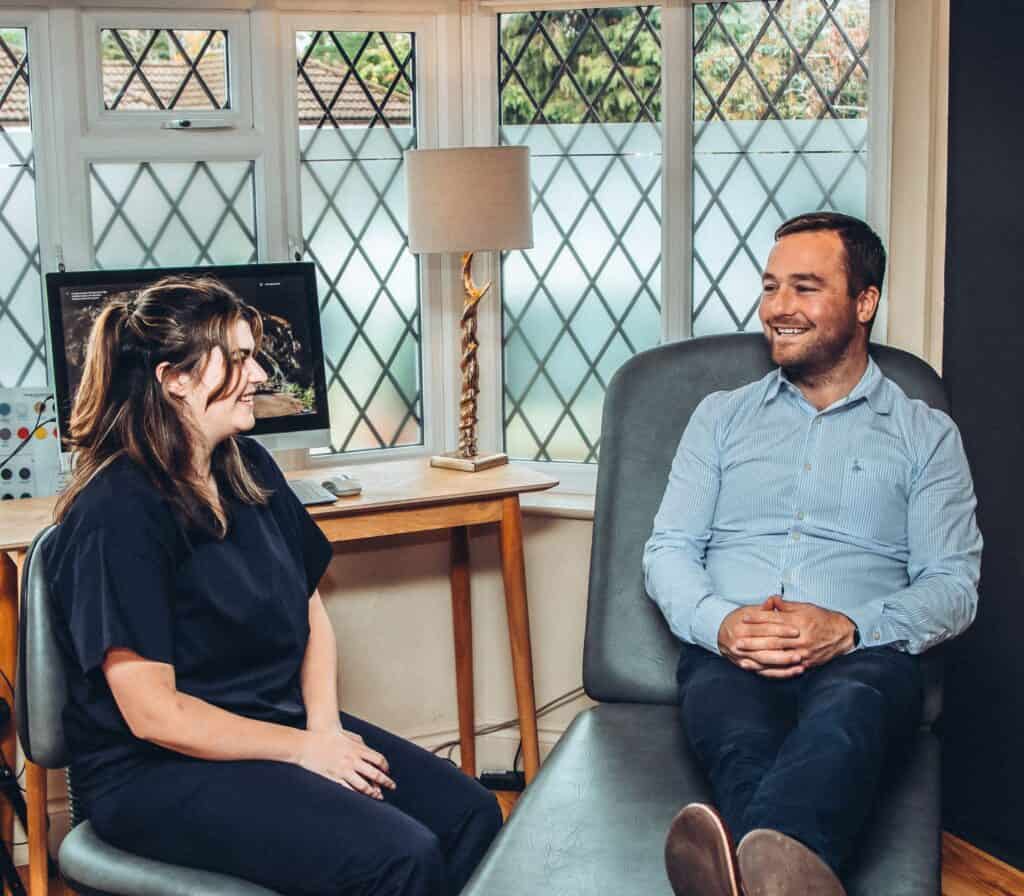Foot orthoses have been successfully employed since the mid-1800s to help manage a wide range of disorders affecting the foot, lower extremities and spine. However, many people have a misconception about their function and who should wear them. For example, two myths surrounding foot orthotic insoles are that they’re for older adults or can only be worn with fat, ugly shoes.
The reality is that ‘bulky’ orthotics are a thing of the past. Nowadays, the latest technologies utilise ultra-lightweight and thin materials for orthotic insoles to comfortably fit in most normal shoes, giving people a larger variety of shoe options to wear them.
But before we get into how foot orthotics are made, let’s look at their function.
How do foot orthotics work?
Your feet have an extremely complex structure. When parts of this structure are not aligned properly and don’t work holistically with the other parts, your feet lose the capacity to support your body and balance your movement effectively.
This misalignment has a detrimental effect on joints and muscles, as some may be put under more strain than others during your gait cycle, leading to pain in the lower back, hips, knees and feet. Your gait is the individual pattern your body follows when you move from point A to point B. This pattern is as unique to you as your own fingerprints.
A gait analysis is used to determine any abnormalities in your pattern that can contribute to developing pain in your lower limbs. By examining your gait cycle, it can assess at which points the muscles are active, where the ligaments are being stressed and where the bones are under pressure.
Custom orthotic insoles work by reducing the strain on the body that occurs when your foot structure is in misalignment. Orthotics help stabilise the foot by diverting and offloading the force that’s causing a particular structure of bones, muscles and tendons to suffer during your regular walk.
When to get Orthotics
Custom foot orthotics can be functional, accommodative or therapeutic, depending on the condition they treat. They are often prescribed to treat a range of foot and ankle problems, including flat feet, high arches, plantar fasciitis, and more. If you experience persistent foot pain, discomfort, or have difficulty walking, you may benefit from orthotics. Additionally, if you engage in activities that put a lot of strain on your feet or require prolonged standing or walking, you may benefit from orthotics. It is important to consult with a podiatrist or foot specialist who can assess your condition and recommend the appropriate orthotics for your needs.
Foot orthotics can help correct: ● Muscle-wasting conditions
● Undiagnosed stress fractures
● Ligament injuries
● Plantar Fasciitis
At Walk This Way Podiatry, we prescribe handmade custom foot orthotics for a range of lower limb dysfunctions, gait abnormality and musculoskeletal deformity/pathology.
Since they’re custom-made from exact scans of your feet, they’ll fit perfectly into your usual footwear. Some people opt for having made a couple of pairs to wear them with a wider variety of shoes. Wearing them daily will alleviate stress on your joints and stabilise your gait, preventing the development of pain in your feet or lower extremities.
What’s the process involved in creating custom orthotics?
We follow a simple three-step process:
Step 1: Biomechanical assessment We kick off the process with a thorough physical examination and functional tests of your hips, knees and feet to check their flexibility and determine how strong and stable your legs are. Then, using a state-of-the-art gait analysis software called Optogait, we assess your unique walking pattern. Optogait looks at the different phases of your gait cycle and evaluates if your right leg and foot behave the same as the left. If they don’t, it indicates where they’re working differently and by how much, rating the difference.
With the combination of results from the physical examination, functional tests and Optogait, we can diagnose any abnormalities, what’s causing them and more importantly, what we can do to help you. When prescribing custom foot orthotics, we follow a rigorous ethical protocol, meaning we only recommend them when there is pain, pathology/deformity, or gait abnormality that can develop future problems.
The best thing about custom foot orthotics is that they’re prescribed exclusively to your biomechanical needs. Therefore, they’re tailored-made to suit your foot type, foot function, any foot deformity/pathology present, body weight, and footwear. We also take into consideration any sports you play, and if you would benefit from having a pair of orthotic insoles explicitly made for your sports shoes, that’d be football, tennis, golf, etc.
You can have your custom foot orthotics made from many types of materials. What’s more, you can choose different orthotic materials for the shell of the orthotic, forefoot additions, mid and top layers needed.
Step 2: Feet scan If your biochemical assessment indicates that you’ll benefit from wearing custom foot orthotics, we’ll proceed to take a 3D digital scan of your feet with our state-of-the-art structure sensor. This sensor will take an impression of your feet, which is then sent — along with your prescription detailing the materials, dimensions and accessories that need to be used to create your orthotics — via email to our orthotic manufacturer in Staffordshire.
This process is a lot quicker and much more environmentally friendly than the old-fashioned method of plaster of Paris and foam boxes, not only because it cuts down the time required for posting but also the amount of waste generated with the packaging.
At Walk This Way Podiatry, custom foot orthotics are always part of a treatment care plan. This plan will be tailored to your specific needs, personal choices and biomechanical assessment mentioned above.
Step 3: Fitting The standard turnaround time from sending your scans and prescription to receiving your orthotic insoles is approximately seven days. We will book you in for your orthotic fitting appointment when they arrive.
This fitting is to check that your orthoses fit nicely into your shoes and try them with several pairs to see which will give you the best results.
You will need some time to get used to wearing custom orthotics and experience their benefits as your muscles, tendons, and ligaments begin to adjust. For your feet to become accustomed to your orthotics, you’d need to be standing or walking in them instead of sitting down and progressively increase the amount of time you wear them every day.
At Walk This Way Podiatry, we only provide high-quality foot orthotics, therefore with the required care, they should last up to 2-3 years, depending on suitable material choice and how much they are used. We recommend that you get them refurbished every 12 months. The refurbishment includes replacing top covers and additions to prolong their life.
Custom foot orthotics can genuinely transform your life, enabling you to enjoy your lifestyle without pain or limitation and boost your overall health and wellbeing. That’s why in our view, they’re priceless.
If you wish to pay us a visit and find out if you could benefit from wearing foot orthoses, book your appointment now.








